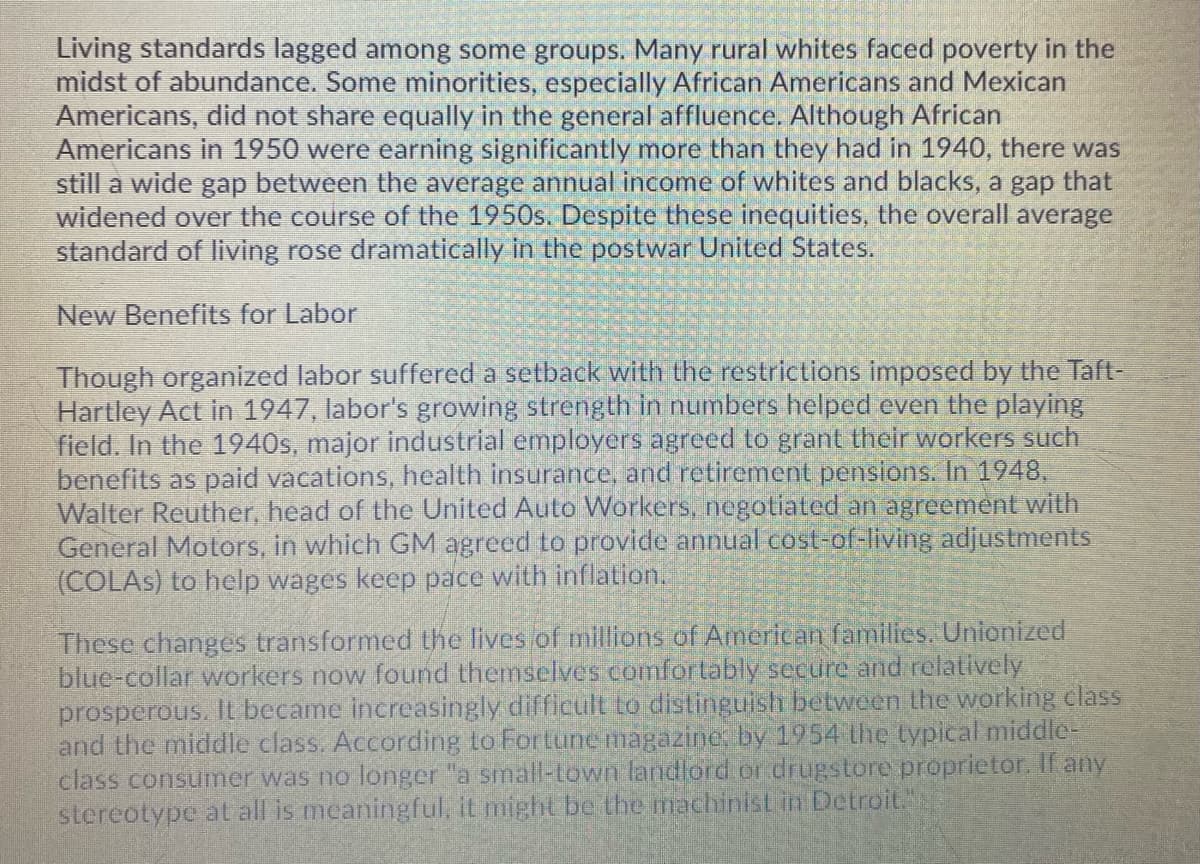Use evidence from the text, “The Postwar Economy” to explain how capitalism formed the United States into the country it is today.
Use evidence from the text, “The Postwar Economy” to explain how capitalism formed the United States into the country it is today.
Related questions
Question
Use evidence from the text, “The Postwar Economy” to explain how capitalism formed the United States into the country it is today.

Transcribed Image Text:Living standards lagged among some groups. Many rural whites faced poverty in the
midst of abundance. Some minorities, especially African Americans and Mexican
Americans, did not share equally in the general affluence. Although African
Americans in 1950 were earning significantly more than they had in 1940, there was
still a wide gap between the average annual income of whites and blacks, a gap that
widened over the course of the 1950s. Despite these inequities, the overall average
standard of living rose dramatically in the postwar United States.
New Benefits for Labor
Though organized labor suffered a setback with the restrictions imposed by the Taft-
Hartley Act in 1947, labor's growing strength in numbers helped even the playing
field. In the 1940s, major industrial employers agreed to grant their workers such
benefits as paid vacations, health insurance, and retirement pensions. In 1948,
Walter Reuther, head of the United Auto Workers, negotiated an agreement with
General Motors, in which GM agreed to provide annual cost-of-living adjustments
(COLAS) to help wages keep pace with inflation.
These changes transformed the lives of millions of American families. Unionized
blue-collar workers now found themselves comfortably secure and relatively
prosperous. It became increasingly difficult Lo distinguish between the working class
and the middle class. According to Fortune magazine, by 1954 the typical middle-
class consumer was no longer "a small-town landlord or drugstore proprietor. If any
stereotype at all is meaningful, it might be the machinist in Detroit."
Expert Solution
Introduction
Post the Second World, the United States made an unprecedented level of economic developement. It emerged as the world's greatest economy and political power. While businesses and corporations grew even bigger, the middle class also grew in size and many were able to come out of poverty. Economic development, opportunities, political stability, better laws, religious tolerance attracted millions of immigrants into the United States.
Step by step
Solved in 2 steps
